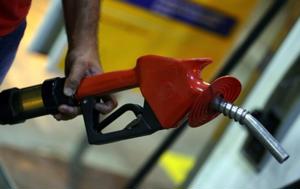US gasoline demand weak but expected to strengthen this summer
(Reuters) -- US gasoline demand has been weaker than expected this year, but a growing economy and relatively cheap pump prices have the energy industry expecting record demand again this summer driving season, which should help drain the global oil glut.
Gasoline demand in the first two months of 2017 was down 2.1% from a year ago, according to the US Energy Information Administration. The US gasoline market accounts for roughly 10% of global oil consumption, so American motorists have outsized influence over the global petroleum supply.
Some analysts believe weak gasoline demand and a recent dip in auto sales will keep the global oil glut swollen. Analysts said weak demand may be temporary, due to the weather and other unusual factors. But oil refiners doubt that summer demand will be strong enough to boost their profit margins.
Last year, US gasoline demand hit a record 9.33 MMbpd. Despite the dip in demand so far this year, vehicle miles traveled are up, a sign that fuel efficiency is rising.
Analysts and refiners blamed the drop in gasoline demand to unusually bad weather in California and Texas, states with the highest US driving volumes. California's rainfall in January and February was more than double the amount in the same period last year, according to the US National Oceanic and Atmospheric Administration.
With summer driving season in sight, the outlook for gasoline demand is strong. Motorists are expected to hit US roads at rates not seen in a decade, the nation's largest motorists' advocacy group said on Wednesday.
The American Automobile Association projected that 34.6 MM people will drive 50 mi or more from home during the end-of-month holiday period, most since 37.3 MM in 2005.
Steady economic growth and low unemployment should help boost demand in coming months, analysts said.
"I am a bit more bullish on US gasoline demand than I was six months ago," said John Auers of refining consultancy Turner, Mason, & Co. "People thought 2016 would be a peak year, but I think we will top that this year."
US gasoline prices have risen in recent months, but remain relatively cheap. The average pump price for regular gasoline was $2.34 per gallon on Thursday, up just a dime from a year ago, according to AAA.
US President Donald Trump's tougher anti-immigration stance also hurt demand, Barclays analyst Paul Cheng said in a note this week. He estimated fear of deportation decreased driving activity among illegal immigrants enough to shave 0.4% from last year's total demand.
MORE VEHICLE EFFICIENCY
US vehicle miles traveled on US roads were up 1.5% from last year through the first three months of 2017, according to the US Department of Transportation. Analysts said higher fuel efficiency standards are starting to take hold, which could mean US gasoline demand will peak soon.
US sales of new cars and trucks hit a record high in 2016. SUVs and light trucks account for more than 60% of sales in 2016 and the first quarter of 2017, according to Barclays. Yearly auto sales fell to a seasonally adjusted annual rate of 16.9 million cars in April.
The average fuel economy of new vehicles sold in the United States is up by 0.2 mi/gal since the start of the year, hitting 25.3 mpg in April, according to Michael Sivak and Brandon Schoettle at the University of Michigan Transportation Research Institute, nearing August 2014's peak of 25.5 mpg.
US gasoline inventories, thanks to weaker demand, remain 5.8% above the five-year seasonal average, according to the EIA.
Unless gasoline demand sharply increases, oil refiners may be in for another tough year. US gasoline refining margins have remained below 2016 levels for most of the year, an ominous sign ahead of summer driving season.
"The book has already been written," said one refining executive. "Inventories are just too high, and they are not going away. We have pretty much written off the summer."
Reporting by Jarrett Renshaw; Additional reporting by Devika Krishna Kumar; Editing by David Gregorio







Comments